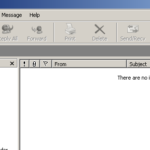This tutorial contains instructions to fix Outlook Express Error 0x800c0133 due to 2GB size limit. The error 0x800c0133 in OE, occurs because one the Outlook folders exceeds the 2GB limit in size.
Description of .DBX 2GB size limit problem in Outlook Express.
When one of the main Outlook Express folders (e.g. the “Inbox” or the “Sent”) exceeds the 2GB in size, OE returns the error 0x800c0133 during the Send/Receive operation and sometimes the corresponding OE folder becomes empty (Corrupted).* For example, if the “Inbox” folder (Inbox.dbx), exceeds the 2GB in size, then OE cannot receive the new emails and displays the error 0x800c0133.
* Note: If one of the OE folders is empty, then the associated DBX file is corrupted. In that case try to recover your Emails from the corrupted OE folder by following the instructions in this article: How to Recover Outlook Express DBX file for FREE.
How to Fix Outlook Express 2GB Limit problem (Send/Receive Error 0x800c0133).
Step 1. Enable Hidden Files View.
1. Open Windows Explorer.
2. From the Tools menu choose Folder Options.
3. At View tab, click Show hidden files and folders and click OK.
![image_thumb[1] image_thumb[1]](https://qnet88.com/wp-content/uploads/2021/12/image_thumb1_thumb-9.png)
Step 2. Locate the Outlook Express 2GB DBX file on your disk.
1. Open Outlook Express store folder. Usually this folder is located at the following path on your disk:
- C:Documents and Settings<YourUserName>Local SettingsApplication DataIdentities{<OutlookExpressIdentityName>}MicrosoftOutlook Express
e.g. “C:Documents and SettingsAdminLocal SettingsApplication DataIdentities{D8F3C56D-965E-41AE-8A23-A58460ABAE00}MicrosoftOutlook Express”
3. From the Explorer’s View menu choose Details.
4. Locate which DBX file, exceeds the 2GB storage limit. *
* In this example, the “Inbox.dbx” file exceeds the 2GB in size.
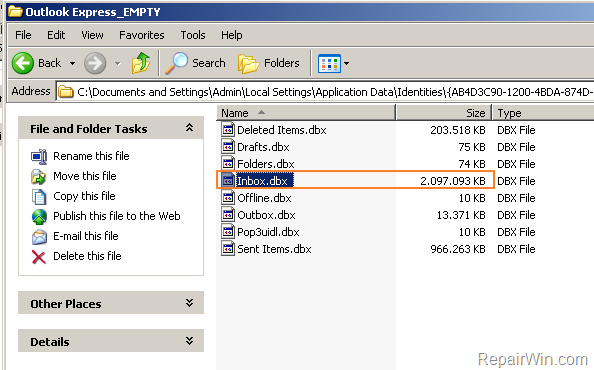
Step 3. Move the Emails from the Oversized Mail folder to a New Mail folder.
1. Open Outlook Express.
2. Select the oversized mail folder (with over 2GB size, e.g. the “Inbox” folder at this example).
3. If you can see your emails on that folder (the folder is not empty), then proceed as follows: *
* Notice: If the folder seems empty (you don’t see any emails on it), then the OE folder (and the associated DBX file) is corrupted. At that case, then you have to recover your emails from the corrupted DBX folder by following the instructions in this article.
4. At the left pane, of the OE program, right click at the oversized folder and choose New folder (in order to create a new mail folder)
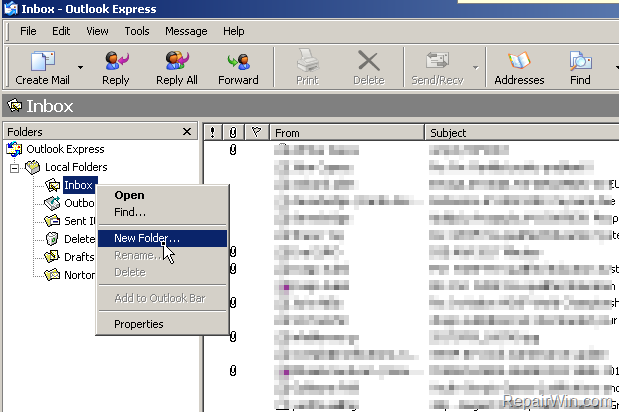
5. Type a recognizable name for the new folder followed by a year (e.g. “Inbox-2016”)
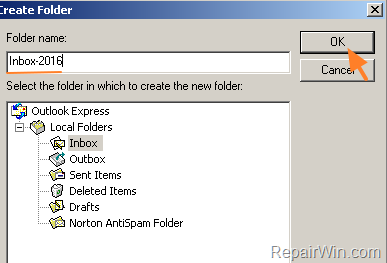
6. Then, from the oversized folder (e.g. from “Inbox”), select a group of emails (e.g. all the emails from year 2016) and drag and drop (move) them to the new Mail folder you created before (e.g. to “Inbox-2016”).
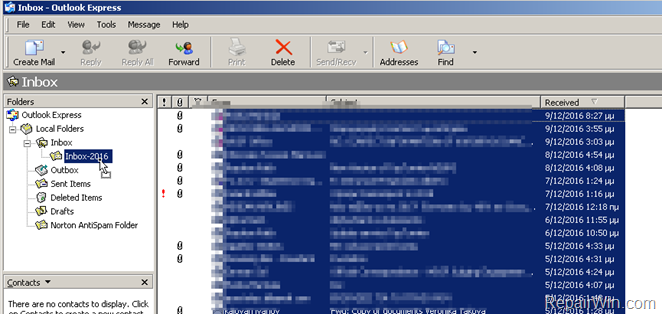
7. Repeat the same steps (create different folders by year for example, and move the mails from the oversized folder to the new folders). *
* Notice: If you face problems during the move operation (e.g. if you cannot move some messages to the new folder), then:
1. Close Outlook Express.
2. Copy (backup) the “Outlook Express” folder from the OE Store location to another destination on your disk.
3. Then follow the instructions at step-4 to delete the oversized .dbx file.
4. Open Outlook Express.
5. Import the emails from the OE backup folder (From File menu go to -> Import Messages -> Microsoft Outlook Express 6 -> Import mail from OE store directory…). **** If you still face problems during import, then follow the instructions on this article to repair the corrupted DBX file.
8. When you finish with the email transfer and the 2GB folder becomes empty from emails (e.g. the “Inbox” in this example), then continue to the next step.
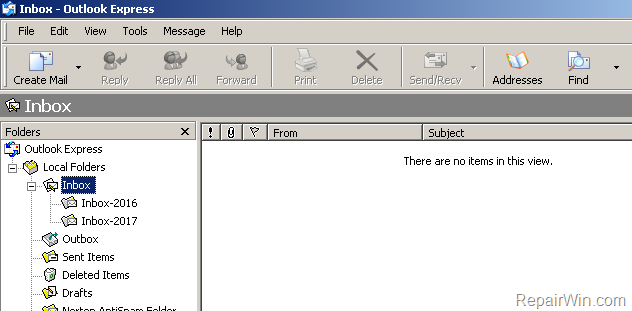
Step 4. Delete the oversized Outlook Express DBX file from your disk.
1. Open Outlook Express store folder on your disk.
2. Delete the oversized DBX file (e.g. the “Inbox.dbx” in this example).

3. Launch Outlook Express.
4. OE will create (automatically) a new clean and healthy mail folder to store emails. *
* Note: If you still receive the same error, then try to repair the corrupted OE folder by following the instructions in this article: How to Recover Outlook Express DBX file for FREE.
That’s all folks! Did it work for you?
Please leave a comment in the comment section below or even better: like and share this blog post in the social networks to help spread the word about this solution.


